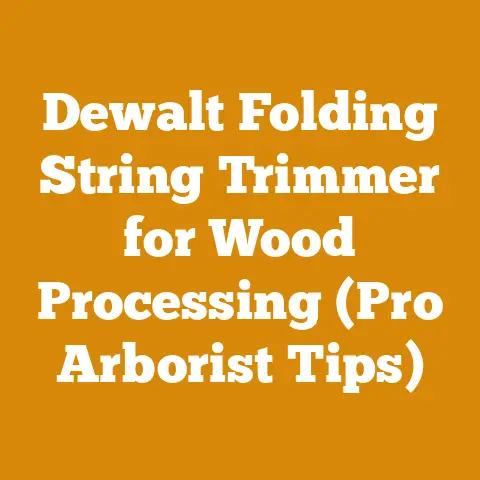Combination Gas Wood Fireplace Tips (5 Expert Woodburning Hacks)
It was the dead of winter, the kind where the wind howls a mournful song that chills you to the bone.
My family and I were huddled around our gas fireplace, seeking refuge from the icy grip outside.
We’d always relied on it for supplemental heat and ambiance, especially during those long winter nights.
But something felt…off.
The flames flickered weakly, the heat output was minimal, and the whole experience lacked the cozy, crackling charm of a real wood fire.
That’s when it hit me: why not combine the convenience of gas with the authentic feel of wood?
I embarked on a journey to unlock the secrets of maximizing the wood-burning potential of our gas fireplace.
This wasn’t about abandoning gas altogether, but about enhancing it – creating a hybrid heating solution that provided both efficiency and the unmatched ambiance of a real wood fire.
Over the years, I’ve experimented, researched, and consulted with seasoned woodworkers and fireplace experts.
Through trial and error, I’ve developed a set of techniques that can transform your gas fireplace into a truly exceptional heat source and a captivating focal point.
In this article, I’m going to share with you five expert wood-burning hacks that will allow you to safely and effectively burn wood in your combination gas fireplace.
These tips are designed to help you get the most out of your fireplace, improve its heating efficiency, and create a truly authentic wood-burning experience.
Combination Gas Wood Fireplace Tips (5 Expert Woodburning Hacks)
Hack #1: Understanding Your Fireplace’s Limitations and Potential
Before you even think about loading up your gas fireplace with wood, it’s crucial to understand its design and capabilities.
Not all gas fireplaces are created equal, and some are simply not designed to handle wood burning, even in small amounts.
Identifying Your Fireplace Type:
- Gas Log Sets: These are the most common type, designed to mimic the look of a real wood fire.
They typically consist of ceramic logs placed over a gas burner.
These are generally not suitable for burning real wood. - Gas Fireplace Inserts: These are installed inside an existing masonry fireplace.
Some models are designed to burn both gas and wood, but it’s crucial to check the manufacturer’s specifications. - Direct Vent Gas Fireplaces: These are sealed units that vent directly to the outside.
They are highly efficient but are not designed for wood burning.
Checking the Manufacturer’s Specifications:
The most important step is to consult your fireplace’s owner’s manual or contact the manufacturer directly.
Look for clear indications of whether the fireplace is approved for wood burning.
If it’s not explicitly stated, assume it’s not safe to do so.
Why is this important?
Burning wood in a gas fireplace not designed for it can lead to several serious problems, including:
- Carbon Monoxide Poisoning: Improper ventilation can cause dangerous levels of carbon monoxide to build up in your home.
- Fire Hazard: Wood embers can escape the fireplace and ignite nearby materials.
- Damage to the Fireplace: Excessive heat can damage the gas burner, ceramic logs, and other components.
- Voiding the Warranty: Burning wood in an unapproved fireplace will likely void the manufacturer’s warranty.
My Experience:
I once helped a friend who, without checking, tried to burn wood in his gas log set.
The result was a cracked ceramic log, a melted gas burner, and a house filled with smoke.
It was a costly and dangerous mistake that could have been avoided by simply reading the owner’s manual.
Data Point:
According to the U.S.
Consumer Product Safety Commission (CPSC), there are approximately 25,000 residential fires caused by fireplaces each year, resulting in an estimated 30 deaths and 175 injuries.
Improper use and maintenance are significant contributing factors.
Actionable Advice:
- Locate your fireplace’s owner’s manual and read it carefully.
- If you’re unsure about your fireplace’s capabilities, contact the manufacturer or a qualified fireplace technician.
- Never burn wood in a gas fireplace unless it’s explicitly approved for that purpose.
Hack #2: Selecting the Right Wood: Species, Seasoning, and Size
Assuming your fireplace is approved for wood burning, the next crucial step is selecting the right type of wood.
Not all wood is created equal, and the type you choose can significantly impact the efficiency, safety, and overall enjoyment of your fireplace.
Hardwood vs. Softwood:
- Hardwoods: These are generally denser and burn hotter and longer than softwoods.
They also produce less smoke and creosote.
Examples include oak, maple, ash, birch, and beech. - Softwoods: These are less dense and burn faster than hardwoods.
They also tend to produce more smoke and creosote.
Examples include pine, fir, spruce, and cedar.
Why Hardwood is Preferred:
Hardwoods are the preferred choice for burning in a gas fireplace for several reasons:
- Higher Heat Output: Hardwoods contain more energy per unit volume than softwoods, resulting in a higher heat output.
- Longer Burn Time: The denser structure of hardwoods allows them to burn longer, reducing the need for frequent refueling.
- Less Smoke and Creosote: Hardwoods produce less smoke and creosote, which helps to keep your chimney cleaner and reduces the risk of chimney fires.
The Importance of Seasoning:
Seasoning is the process of drying wood to reduce its moisture content.
Green wood can contain up to 50% moisture, which significantly reduces its heating value and increases smoke production.
Why Seasoned Wood is Essential:
- Higher Heating Value: Seasoned wood burns hotter and more efficiently because less energy is wasted evaporating moisture.
- Less Smoke: Seasoned wood produces significantly less smoke, which is better for your health and the environment.
- Reduced Creosote Buildup: Seasoned wood produces less creosote, which reduces the risk of chimney fires.
Seasoning Techniques:
- Air Drying: This is the most common method, involving stacking wood in a well-ventilated area for 6-12 months.
- Kiln Drying: This is a faster method that uses heat to dry the wood.
Kiln-dried wood typically has a moisture content of 20% or less.
Ideal Wood Size:
The size of the wood you burn is also important.
Smaller pieces ignite more easily and burn faster, while larger pieces burn slower and longer.
Recommended Size:
- Length: 12-16 inches
- Diameter: 4-6 inches
My Experience:
I once tried to burn green pine in my fireplace, thinking I could get away with it.
The result was a smoky, sputtering fire that produced very little heat.
It was a frustrating experience that taught me the importance of using properly seasoned hardwood.
Data Point:
According to the EPA, burning seasoned wood can reduce smoke emissions by up to 50% compared to burning green wood.
Actionable Advice:
- Choose hardwoods over softwoods for burning in your gas fireplace.
- Season your wood for at least 6-12 months before burning it.
- Cut your wood to the recommended size for optimal burning.
- Invest in a moisture meter to ensure your wood is properly seasoned (target moisture content: 20% or less).
Hack #3: Mastering the Art of Fire Building in a Gas Fireplace
Building a fire in a gas fireplace is different from building one in a traditional wood-burning fireplace.
The key is to create a fire that complements the gas burner without smothering it or causing excessive smoke.
The Top-Down Fire Method:
This method involves building the fire upside down, with the larger logs on the bottom and the kindling and tinder on top.
This allows the fire to burn slowly and efficiently, producing less smoke and creosote.
Steps for Building a Top-Down Fire:
- Place two or three large logs on the bottom of the fireplace.
- Arrange several smaller logs perpendicular to the bottom logs.
- Add a layer of kindling on top of the smaller logs.
- Place a handful of tinder (e.g., dry leaves, newspaper) on top of the kindling.
- Light the tinder and let the fire burn down.
Using the Gas Burner as a Starter:
You can use the gas burner to help ignite the wood.
Simply turn on the gas burner and let it burn for a few minutes until the kindling catches fire.
Then, turn off the gas burner and let the wood burn on its own.
Maintaining the Fire:
Once the fire is burning, you can add more wood as needed.
Be careful not to overload the fireplace, as this can reduce airflow and increase smoke production.
Tips for Success:
- Leave space between the logs for airflow.
- Use small pieces of wood to start the fire.
- Don’t overload the fireplace.
- Monitor the fire closely and adjust the airflow as needed.
My Experience:
I used to struggle with building fires in my gas fireplace.
The fires would often sputter out or produce excessive smoke.
But once I learned the top-down fire method, everything changed.
My fires now burn longer, hotter, and cleaner.
Data Point:
Studies have shown that the top-down fire method can reduce smoke emissions by up to 80% compared to traditional fire-building methods.
Actionable Advice:
- Try the top-down fire method for building fires in your gas fireplace.
- Use the gas burner as a starter to help ignite the wood.
- Maintain the fire by adding wood as needed, being careful not to overload the fireplace.
- Experiment with different wood arrangements to find what works best for your fireplace.
Hack #4: Optimizing Airflow for Efficient Burning and Reduced Smoke
Proper airflow is essential for efficient burning and reduced smoke production.
Without enough air, the fire will smolder and produce excessive smoke.
With too much air, the fire will burn too quickly and waste fuel.
Understanding Airflow Dynamics:
Fire needs oxygen to burn.
The air supply to your fireplace affects the rate of combustion, the temperature of the fire, and the amount of smoke produced.
Adjusting the Damper:
The damper is a metal plate located in the chimney that controls the amount of air that enters the fireplace.
How to Adjust the Damper:
- Open the damper fully when starting the fire. This will provide plenty of air to help the fire ignite.
- Once the fire is burning well, gradually close the damper until the flames are burning steadily and cleanly.
- If the fire is producing excessive smoke, open the damper slightly to increase airflow.
- Never close the damper completely while the fire is burning. This can cause carbon monoxide to build up in your home.
Using a Fireplace Bellows:
A fireplace bellows is a tool used to blow air into the fire, helping to ignite the kindling and increase the intensity of the flames.
How to Use a Fireplace Bellows:
- Aim the nozzle of the bellows at the base of the flames.
- Squeeze the bellows to blow air into the fire.
- Repeat as needed to help the fire ignite and burn more intensely.
Ensuring Proper Ventilation:
Proper ventilation is essential for preventing carbon monoxide poisoning.
Make sure your home has a working carbon monoxide detector and that your chimney is properly cleaned and inspected regularly.
My Experience:
I once had a problem with my fireplace producing excessive smoke.
I tried everything – different types of wood, different fire-building methods – but nothing seemed to work.
Finally, I realized that the problem was with the damper.
It was partially closed, restricting airflow to the fire.
Once I fully opened the damper, the smoke problem disappeared.
Data Point:
According to the National Fire Protection Association (NFPA), chimney fires are a leading cause of residential fires.
Regular chimney cleaning and inspection can help to prevent chimney fires and ensure proper ventilation.
Actionable Advice:
- Adjust the damper to optimize airflow for efficient burning and reduced smoke production.
- Use a fireplace bellows to help ignite the kindling and increase the intensity of the flames.
- Ensure proper ventilation by having your chimney cleaned and inspected regularly.
- Install a carbon monoxide detector in your home to protect against carbon monoxide poisoning.
Hack #5: Safety First: Essential Precautions for Burning Wood in a Gas Fireplace
Safety should always be your top priority when burning wood in a gas fireplace.
By taking the necessary precautions, you can enjoy the warmth and ambiance of a wood fire without putting yourself or your family at risk.
Carbon Monoxide Detection:
Carbon monoxide (CO) is a colorless, odorless gas that can be deadly.
It is produced when fuels such as wood, gas, or propane are burned incompletely.
Why Carbon Monoxide Detectors are Essential:
- CO is undetectable by human senses.
- CO poisoning can cause flu-like symptoms, such as headache, dizziness, nausea, and fatigue.
- High levels of CO can lead to unconsciousness and death.
Recommendations:
- Install a CO detector on every level of your home, especially near sleeping areas.
- Test your CO detectors regularly to ensure they are working properly.
- Replace your CO detectors every 5-7 years.
Chimney Maintenance:
A properly maintained chimney is essential for safe wood burning.
Why Chimney Maintenance is Important:
- Creosote buildup can lead to chimney fires.
- Cracked or damaged chimneys can leak carbon monoxide into your home.
- Obstructions in the chimney can restrict airflow and cause smoke to back up into your home.
Recommendations:
- Have your chimney inspected and cleaned annually by a qualified chimney sweep.
- Repair any cracks or damage to your chimney promptly.
- Clear any obstructions from your chimney, such as bird nests or debris.
Fire Extinguisher and Fire Safety Plan:
Having a fire extinguisher and a fire safety plan can help you to respond quickly and effectively in the event of a fire.
Recommendations:
- Keep a fire extinguisher near your fireplace.
- Make sure everyone in your household knows how to use the fire extinguisher.
- Develop a fire safety plan that includes escape routes and a meeting place.
- Practice your fire safety plan regularly.
Safe Ash Disposal:
Ashes can remain hot for several days after a fire.
Improper disposal of ashes can lead to fires.
Recommendations:
- Allow ashes to cool completely before disposing of them.
- Store ashes in a metal container with a tight-fitting lid.
- Keep the container away from flammable materials.
- Dispose of ashes in a safe and responsible manner.
My Experience:
I once had a close call with a chimney fire.
I had been neglecting my chimney maintenance, and creosote had built up to a dangerous level.
One night, I noticed sparks flying out of the chimney.
I quickly called the fire department, who were able to extinguish the fire before it spread to the rest of my house.
That experience taught me the importance of regular chimney maintenance and fire safety precautions.
Data Point:
According to the NFPA, heating equipment is the second leading cause of home fires in the United States.
Actionable Advice:
- Install carbon monoxide detectors on every level of your home.
- Have your chimney inspected and cleaned annually by a qualified chimney sweep.
- Keep a fire extinguisher near your fireplace and make sure everyone in your household knows how to use it.
- Develop a fire safety plan and practice it regularly.
- Dispose of ashes safely and responsibly.
By following these five expert wood-burning hacks, you can transform your combination gas fireplace into a truly exceptional heat source and a captivating focal point.
Remember to prioritize safety, choose the right wood, master the art of fire building, optimize airflow, and maintain your fireplace properly.
With a little knowledge and effort, you can enjoy the warmth and ambiance of a real wood fire with the convenience of gas.
So go ahead, ignite your passion for fire, and create a cozy and inviting atmosphere in your home.






